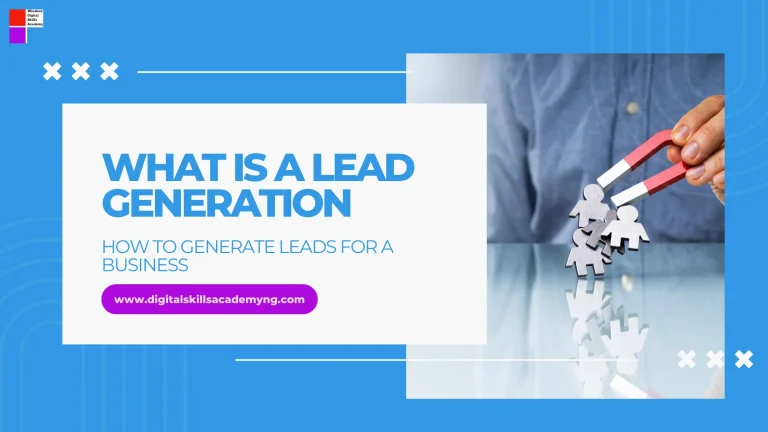How to Use Storytelling to Sell a Product
In the business world, storytelling has become an essential tool for brands to connect with their audiences on a deeper level.
Storytelling is more than just crafting a narrative; it’s about creating an emotional bond between a brand and its customers.
Consumers are bombarded with advertisements, social media posts, and product information every minute in today’s saturated market.
To cut through the noise, businesses need to engage their audience personally. Storytelling offers the perfect avenue for achieving that, as it taps into human emotion, curiosity, and memory—elements that significantly influence purchasing decisions.
STRATEGIES TO GROW A BUSINESS ONLINE
Table of Contents
What Is Storytelling in Business?
In a business context, storytelling is the art of crafting a narrative around your product, service, or brand to create a meaningful and engaging connection with your audience.
Instead of focusing solely on features and benefits, storytelling weaves together facts and emotions to create a relatable, compelling experience.
Storytelling in business can be used across different mediums such as video, social media, blogs, podcasts, or even within a website’s copy.
A well-crafted story connects the business’s values, mission, and the products it offers to the audience’s real-life experiences and emotions.
Elements of Storytelling in Business
A Relatable Protagonist:
Your story needs to feature a protagonist that your target audience can relate to.
This could be a fictional character, a customer, or your brand.
A Conflict or Problem:
Every good story involves some form of tension.
For businesses, this could be the problem your target audience is facing.
Whether it’s a lack of convenience, a health issue, or a gap in their lifestyle.
The Solution (Your Product or Service):
Your product should act as the hero that resolves the conflict or solves the problem.
Emotion:
People are far more likely to remember a story that makes them feel something, whether it’s happiness, hope, nostalgia, or humor.
A Clear Message or Moral:
Finally, the story should leave the audience with a key takeaway.
What should they understand, believe, or feel after hearing your story?
How to Tell Effective Stories in Business
Understand Your Audience:
The first step to telling an effective story is understanding who you’re telling the story to. Are they young adults, parents, professionals, or retirees?
Knowing your audience helps you craft a narrative that resonates with their needs, challenges, and desires.
Define the Core Message:
Your story should have a clear and concise message that aligns with your business values and the benefits of your product.
For example;
If you sell eco-friendly products, your core message might revolve around sustainability and a greener future.
Use Authenticity:
Authenticity is crucial in storytelling.
Audiences can quickly tell when a story feels forced or insincere.
Make sure your story is rooted in your brand’s true values. Share real experiences, testimonials, or challenges your company has faced.
Craft a Compelling Structure:
Like any good story, your business narrative should have a beginning, middle, and end.
Introduce the problem, build tension by discussing the challenges, and resolve it with your product as the solution.
Incorporate Visual Elements:
Visual storytelling is incredibly powerful.
Use images, videos, or infographics to support your narrative. These visuals can add depth and help your audience better understand and connect with your story.
Include a Call to Action:
While the story should evoke emotions, guiding your audience toward a specific action is essential.
Whether signing up for a newsletter, purchasing a product, or following your brand on social media, ensure a seamless transition from the emotional engagement of the story to a concrete step.
The Importance of Storytelling in Business
It Creates Emotional Connections:
People are more likely to purchase from brands they feel connected to.
Storytelling can foster an emotional bond with your audience, which helps build loyalty and trust.
It Makes Your Brand Memorable:
A well-told story is much more memorable than a list of product features. When people remember your story, they’re more likely to think of your brand when they need your product or service.
It Differentiates Your Brand:
In competitive markets, storytelling helps differentiate your brand from the competition. While other businesses may offer similar products or services, your unique story can set you apart.
It Simplifies Complex Ideas:
Some products or services are complex, and it can be difficult to explain their value straightforwardly.
Storytelling allows you to simplify these concepts by framing them in a familiar context.
It Humanizes Your Brand:
In an age of automation and digital marketing, consumers crave human connections. Storytelling humanizes your brand by showcasing the people behind it, their challenges, and how they help improve the customer’s lives.
Storytelling vs. Branding: What’s the Difference?
Although storytelling and branding are often mentioned in the same context, they are distinct.
Branding: is creating a strong, distinct image and identity for your company.
It involves designing your logo, choosing a color palette, defining your values, and shaping how your brand is perceived in the market.
Branding is about how your company presents itself to the world.
Storytelling: on the other hand, is about conveying your brand’s narrative and personality through compelling stories.
It’s a tool used within your broader branding strategy.
While branding is the “what” of your business, storytelling is the “how”, you communicate your values, mission, and products to your audience.
Best Product Storytelling Campaign Examples
- Apple: “Think Different” Campaign
Apple has long been a master of storytelling.
Their “Think Different” campaign featured iconic figures like Albert Einstein, Mahatma Gandhi, and Martin Luther King Jr., emphasizing innovation, creativity, and challenging the status quo.
Rather than focusing on specific product features, Apple’s storytelling centered on the idea of individuality and creativity qualities that resonated deeply with its audience.
The campaign positioned Apple as more than just a tech company; it became a symbol of innovation and disruption.
- Nike: “Just Do It” Campaign
Nike’s storytelling often focuses on overcoming adversity and pushing boundaries.
Their “Just Do It” campaign is a powerful example of how storytelling can inspire action.
Instead of merely selling athletic shoes, Nike’s storytelling encourages individuals to push past their limits and achieve greatness, whether professional athletes or everyday fitness enthusiasts.
Using personal stories and real-life examples makes the brand’s narrative highly relatable.
- Airbnb: “Belong Anywhere”
Airbnb’s storytelling campaign centered on the concept of belonging, which resonated with a global audience.
The brand shared stories of travelers and hosts around the world, highlighting the unique and personal experiences facilitated by Airbnb.
Rather than focusing on cost or convenience, Airbnb used storytelling to create a sense of community and connection.
- Dove: “Real Beauty” Campaign
Dove’s “Real Beauty” campaign redefined beauty standards by featuring real women with diverse body types, skin tones, and backgrounds.
Dove’s storytelling focused on self-esteem, confidence, and inner beauty, moving away from the industry’s traditional portrayal of beauty.
This campaign not only boosted brand awareness but also fostered a loyal customer base that resonated with the brand’s values.
How to Use Storytelling to Sell a Product
Now that we’ve looked at what storytelling is, how to create compelling stories, and some examples of successful storytelling campaigns.
Let’s dive into how you can apply storytelling to sell your product.
Identify the Problem Your Product Solves:
Start by understanding the problem your product addresses.
Whether it’s convenience, time-saving, health, or luxury, ensure that the story centers around the customer’s pain points.
Create a Customer Persona:
Build a character or persona that represents your ideal customer.
- What are their challenges?
- What do they value?
This character will be the protagonist in your story, helping the audience see themselves in the narrative.
Show How Your Product Is the Solution:
Highlight how your product fits into the protagonist life, and solves their problem.
Be specific about how it improves their life, whether by saving time, reducing stress, or improving their well-being.
Incorporate Emotion:
Weave emotional elements into the story.
Show how the customer feels before and after using your product.
The emotional transformation will resonate most with your audience and drive them to act.
Use Real Customer Stories or Testimonials:
Sharing real-life success stories is one of the most effective ways to tell a compelling business story.
Testimonials provide authenticity and social proof, making your story more credible and relatable.
Keep It Simple and Concise:
Your story doesn’t need to be overly complex or long. Simpler stories with a clear narrative often resonate the most.
Focus on one clear message that reflects your product’s value.
Leverage Multiple Platforms:
Don’t limit your storytelling to one medium.
Use social media, email marketing, your website, and even traditional advertising to tell your story in different formats.
Each platform offers unique ways to engage your audience; videos, infographics, blogs, and social media posts can all work together to amplify your story.
Include a Strong Call to Action (CTA):
Once you’ve captured your audience’s attention, guide them toward the next step.
Whether purchasing your product, signing up for a free trial, or following your brand on social media, a strong CTA is essential to converting storytelling into sales.
Conclusion
Storytelling is a powerful tool for businesses looking to stand out in today’s crowded market. It goes beyond traditional advertising methods, by creating a deep emotional connection with the audience.
Through storytelling, you can communicate your brand’s values, mission, and product benefits in a way that resonates with your target audience.
So, whether you’re a startup or an established company, incorporating storytelling into your marketing strategy can be the key to differentiating your brand and building lasting relationships with your customers.
Our certified Digital marketing course will teach you how to perform customer and business research, provide customer service strategies, develop a customer retention plan, and research all the key marketing channels to leverage them to engage your customers and grow your business.
What are you waiting for? Sign up Now!




